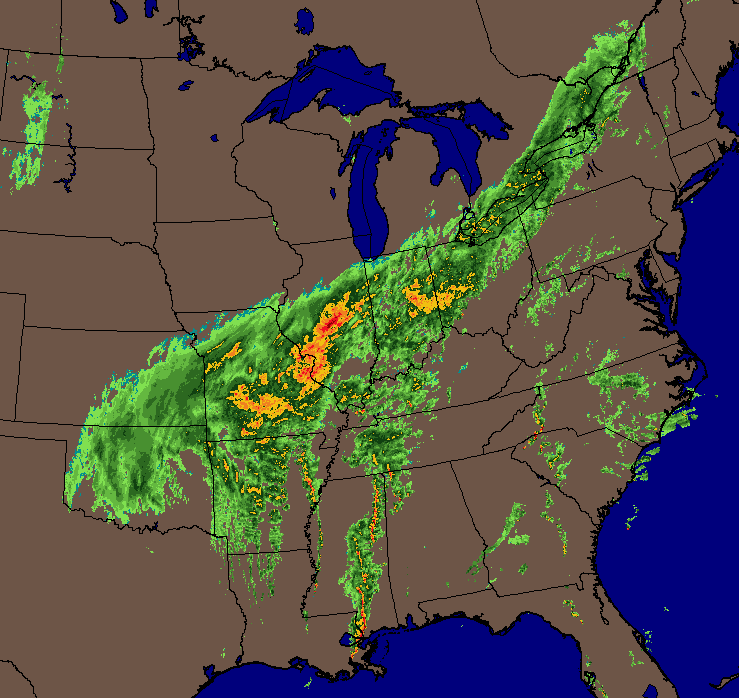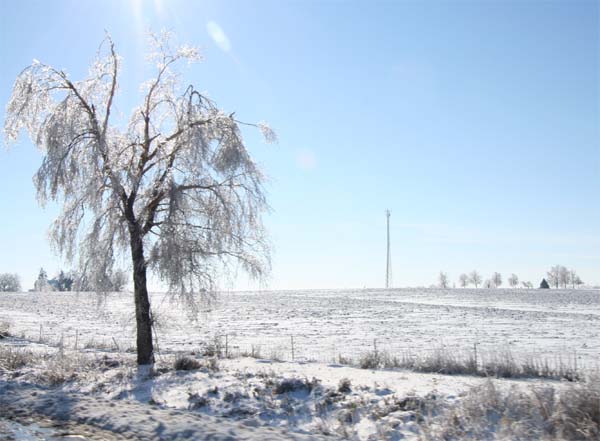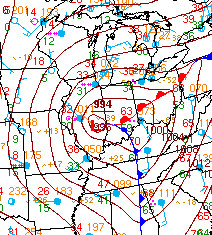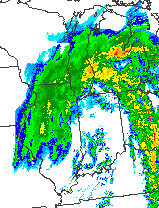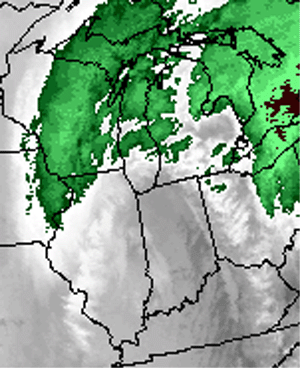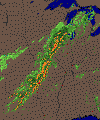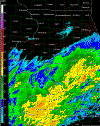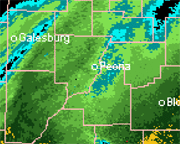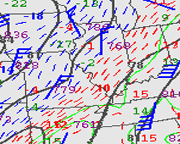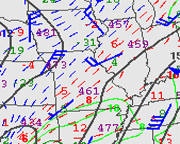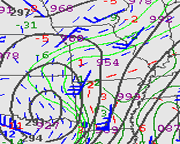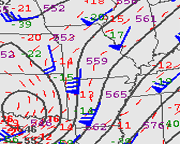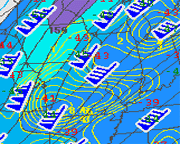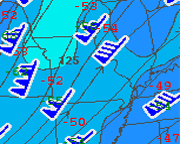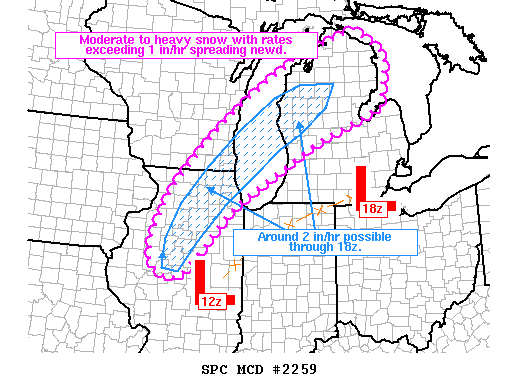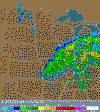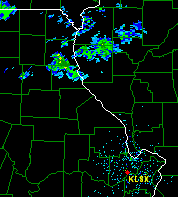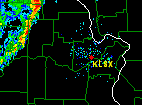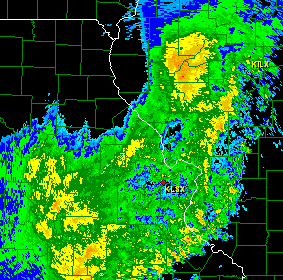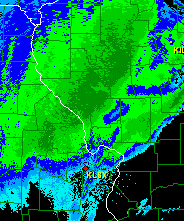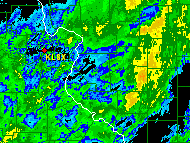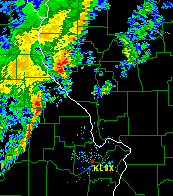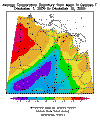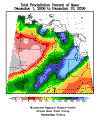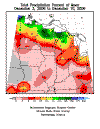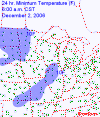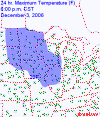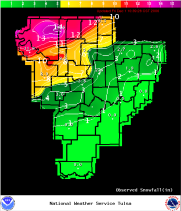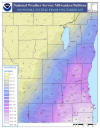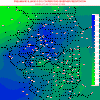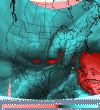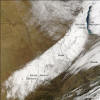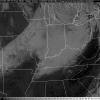November 30th - December 1st - 2006
|
|||||||||
| Return Home | |||||||||
| Return to Analysis Page | |||||||||
|
|||||||||
| Chase Target: Peoria, Illinois Arrival Date: November 30th at 2:30 a.m. Driving Time: 5 1/2 Hours Miles Traveled: 600+ Chase Rating |
|||||||||
| Chase Forecast: | |||||||||
| The winter storm of late November and Early December of 2006 will not soon be
forgotten. Record or near record snow accumulations were reported across
portions of Oklahoma, Missouri, Illinois, and Wisconsin. Many areas
witnessed a long duration precipitation event. Thunderstorms were reported
with snow, sleet, and freezing rain across portions of Oklahoma, Missouri, and
Illinois. I made the decision to chase this snowstorm at the last minute. Driving to this event would be exciting, but I should also point out the challenges involved: heavy rain, thunderstorms, temperatures falling to freezing, 18-wheelers trying to get ahead of the frozen precipitation, and it was night. Nevertheless, I felt it would be worth the effort. I started watching the potential winter storm two weeks before the event. My first call map (additional forecast map on day 3) was issued on Friday, November 24th. There was a time, during the evolution of model forecasts, that it appeared my region might even see some appreciable snowfall. In the end that would not happen. On Wednesday, November 29th, I made the decision to chase this storm. I guess my snow-deprivation had reached a critical point. After reviewing the 00z model data suite, I decided that the heaviest snow band would likely be from Southwest Missouri to Northeast Illinois. There would also be a band of heavy ice/freezing rain on the southern portion of the forecast area. Computer models indicated that snow totals could exceed 18 inches in some locations. I expected a general 8-12" area across portions of Central Illinois. This seemed a bit more reasonable than what the models were forecasting. I also made a note that ground temperatures were in the 40s across much of the above mentioned areas. My experience though has been that ground temperatures will not matter in a heavy snow event. Although models showed the heaviest snow band a tad to the northwest of the Peoria area, I felt like the storm might track a bit further to the east and south. I knew there would be a sharp cutoff area where little or no snow would fall. RH values at 700mb indicated that a sharp dry slot would be cutting up through Southern Missouri, Illinois, and Indiana on Friday Morning. I was a bit concerned about this reaching into Central Illinois. I was looking for an area that would have easy access to the interstate. I had decided on six potential chase cities, however, only one could be chosen. In the end I would decide on Peoria, Illinois.I believed three things: that this situation, no matter what the ground temperature, would produce heavy snow accumulations; that the chase target city would likely receive enough snow to approach their record one day snowfall; and that Peoria, which is centrally located, would provide a nice location to photograph the storm. The effort put into this storm system was ultimately worth it: the chase (this time around) was a success! |
|||||||||
|
|
|||||||||
Wednesday, November 29th. Departure Day.We left for Peoria between 8 p.m. and 9 p.m. on Wednesday Night. We had a five to six hour drive ahead of us. It was already dark and rain was expected north of Mt Vernon. I wondered just how long the drive might take because of worsening weather conditions further north. Ice was already being reported across portions of Northeast Missouri. Temperatures were also starting to fall in the Illinois Counties bordering Missouri. A strong cold front was positioned just to the west/northwest of the Paducah, Kentucky (KPAH) Region. At 8 p.m. the front was entering Western and Central Illinois and then extended back into Central Missouri. Radar indicated that this storm system was producing heavy rain/thunderstorms across a large portion of Oklahoma, Missouri, and Illinois. Rainfall totals exceeded three inches in some locations. Flash flood warnings were issued for a number of counties because of rapid runoff. Thankfully we only had to drive through 30 minutes of heavy rain and that was near Mattoon, Illinois. I observed thunderstorms near Mattoon around 1 a.m. There were four flashes of lightning to the northeast of the city. We encountered a brief period of heavy rainfall as we crossed behind the cold front. Winds gusted to around 30 mph as the front passed. Temperatures then fell rapidly behind the arctic front. From Mattoon to Peoria (approximately 100 miles) the temperature fell 30-35 degrees. Temperatures fell 15 degrees within just a few minutes of frontal passage (see temperature gradient map below). I made the decision to stay near the Illinois River at the Holiday Inn City Center. It was already almost 3 a.m. in the morning when we pulled into Peoria. By the time we arrived at the hotel the outside temperature had fallen to 32 degrees. I did a final check, before going to bed, on area forecast discussions and model forecasts. My final forecast appeared to be on target. Heavy snow would likely begin, after a period of ice, on Thursday Night and continue into Friday Morning. Eight to twelve inches of snow appeared likely for the City of Peoria. Sometimes, though, warm air gets pulled into these storm systems a bit more than expected. So my only concern was how much ice would fall on the front end of the precipitation shield.
On a side note I discovered that the main weather forum, that I post in, had a
number of posters from the Peoria, Illinois area. It was nice to be able
to hear their reports and compare notes as the storm approached. |
|||||||||
|
|
|||||||||
Thursday, November 30th.I don't know how many of you have tried to sleep the night before a big snowstorm but it isn't easy. I guess I am worse than a kid wanting to get out of school. Nonetheless, I did get a few hours of sleep. Most of the 30th was cloudy and dry. Precipitation would remain to our southwest and south until late afternoon. The main surface low was still located over Southern Arkansas at mid-day. A strong trough was approaching the Illinois River Valley from the Plains. This coupled with strong low level cold air advection and elevated warm air advection (as the low strengthened and was pulling northeast) and a frontal system to our east and southeast was setting the stage for a wintry afternoon and evening. There was a rapid expansion of radar returns after 4 p.m. Sleet and freezing rain began to fall in Peoria soon after dusk. Soundings at KILX indicated that temperatures near the surface were at or below freezing while temperatures were much warmer aloft (see KILX sounding). For most of the evening the precipitation would remain in the form of sleet with some occasion flakes of snow. There was also a brief period of freezing rain. Thundersleet was observed in Peoria on several occasions between 11 p.m. and 1 a.m. KILX radar showed several bands of high dbz levels moving over Peoria. These bands produced heavy sleet and occasional lightning. The 500mb low at 00z on Thursday Evening was over Eastern Oklahoma. National Composite radar showed a rapidly expanding area of precipitation over most of the Missouri Valley. The 500mb low would strengthen and track from Southern Missouri into East Central Illinois and West Central Indiana (see maps below). Strong wind fields were noted across much of the TN and Ohio Valley Region. This would help fuel severe thunderstorm development overnight on Thursday and into Friday Morning. A number of severe weather events were reported across the Ohio Valley (this would eventually spread into the Northeast United States). I spent much of my time going back and fourth from the hotel room to the streets below. Although the sleet wasn't providing the most exciting photo opportunities there were a few shots of city workers clearing streets. The sound of the sleet against the hotel room window was fairly impressive. Occasionally the wind would gust and cause a roaring noise. Moderate to heavy sleet fell for more than five hours. It appeared that we had received around 3 inches of ice/sleet. I knew that once we didn't hear the sleet on the window that the sounding had grown cold enough for snow. This wouldn't happen until the wee hours of the morning. Exhausted, I finally decided to get a couple of hours of sleep from 3 a.m. until 4:30 a.m. I awoke several times and was able to see heavy snow falling outside the window. Sleep would not last long! |
|||||||||
|
|||||||||
|
|
|||||||||
|
|
|||||||||
| November 30, 2006 - Upper Air Analysis | |||||||||
|
|
|||||||||
|
|||||||||
Friday, December 1st (the main event)
At 6 a.m. Friday, December 1st a strong 500mb shortwave was located over Missouri and Illinois. This shortwave was strengthening and moving east/northeast. (see charts below). Heavy snow and thundersnow developed on the north side of this 500mb low during the overnight hours. There was an abundance of jet stream energy available to pull up moisture, from the Gulf of Mexico, into the Arctic Air (See jet stream animation). Snow rapidly expanded and spread into Illinois during the overnight hours of the 30th. By Friday Morning, December 1st, much of Central and Northern Illinois was covered in moderate to heavy snow. The primary low was located near Champaign, Illinois at 6 a.m. This put the deformation zone over the Peoria area. Snowfall rates of 1-2 inches per hour were reported in some locations. For the rest of the morning the skies
remained mostly cloudy. A bit of sun did try to break through towards
mid-afternoon. Blowing snow was a problem through 3 p.m. The NWS
issued blowing snow advisories because of this. Temperatures did not
recover through the day and fell into the single digits during the overnight
period.
Peoria recorded a low of 4 degrees on the following morning! The snow pack
helped temperatures stay below normal for several days after the event. |
|||||||||
| | Blog 1 | Blog 2 | | |||||||||
| Area Forecast Discussions | |||||||||
| Lincoln, Illinois NWS - Area Forecast Discussions | |||||||||
| St Louis, Missouri NWS - Area Forecast Discussions | |||||||||
| Storm Prediction Center Mesoscale Discussions | |||||||||
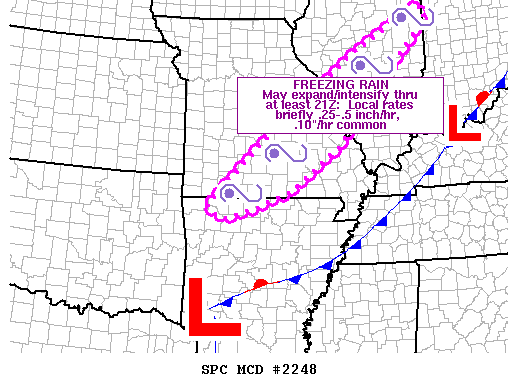 |
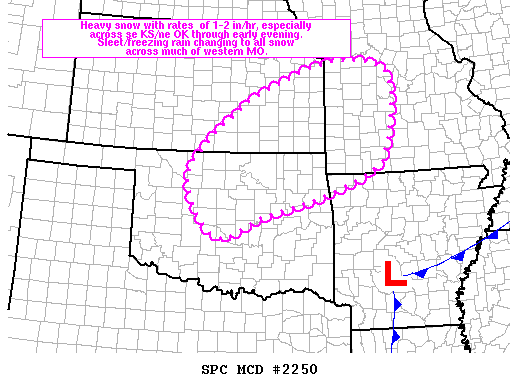 |
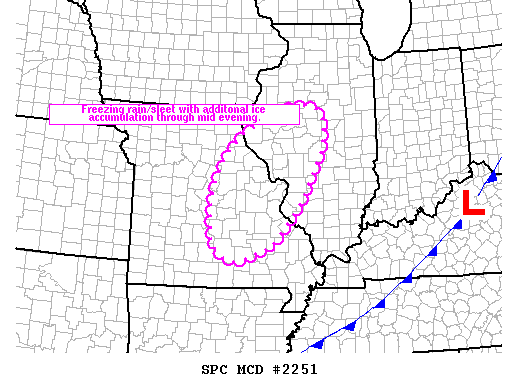 |
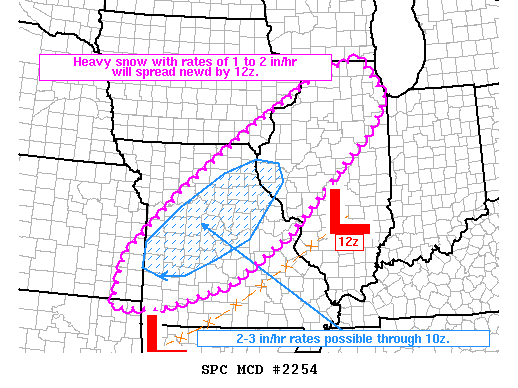 |
||||||
|
|||||||||
| November 30th/December 1st - All Mesoscale Discussions | |||||||||
|
|||||||||
| December 01, 2006 Upper Air Analysis | |||||||||
|
|||||||||
|
|||||||||
|
|||||||||

Large Illinois, Indiana, Michigan |
|||||||||
|
|||||||||
|
|||||||||
|
|||||||||

Large Great Lakes Radar |
|||||||||
|
|||||||||
| St Louis, Missouri - NWS Radar Animations | |||||||||
|
|||||||||
|
|
|||||||||
| Maximum and Minimum Temperatures | |||||||||
|
|||||||||
| Snowfall Accumulation Maps -- NWS | |||||||||
|
|
|||||||||
| Two Day Satellite Animation | |||||||||
|
|
|||||||||
| Other Storm Analysis Pages | |||||||||
| Lincoln, Illinois, NWS Analysis | |||||||||
| St Louis, Missouri, NWS Analysis | |||||||||
| Midwest Climate Watch | |||||||||
| Top of Page | |||||||||
|
General Storm Evolution | Daily Highlights | Snowfall Total Maps | Satellite Imagery |
|||||||||
|
Page design inspired by cimss.ssec.wisc.edu |
|||||||||
|
Please alert me to any errors on this page. |
|||||||||
